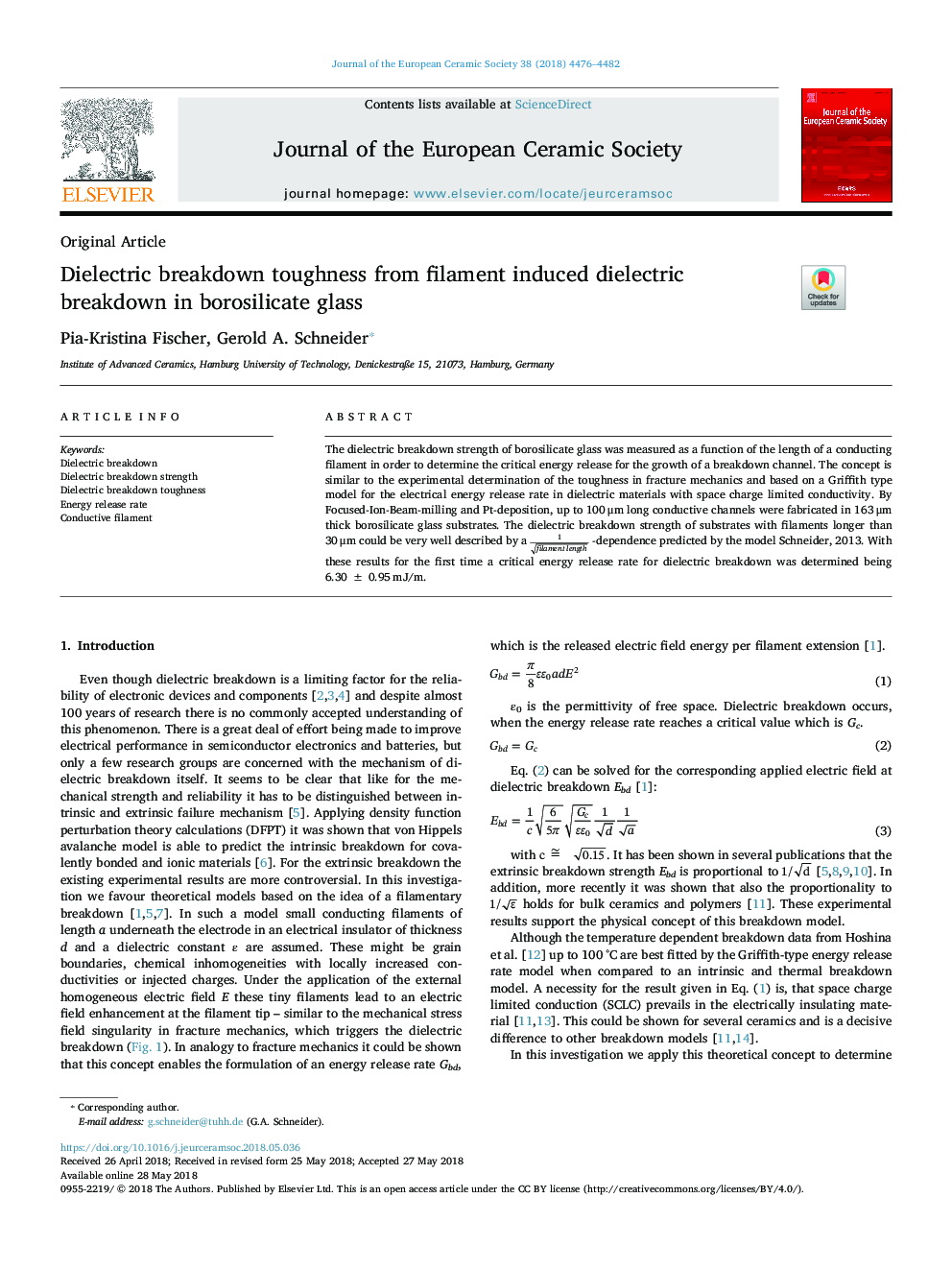| Article ID | Journal | Published Year | Pages | File Type |
|---|---|---|---|---|
| 7897816 | Journal of the European Ceramic Society | 2018 | 7 Pages |
Abstract
The dielectric breakdown strength of borosilicate glass was measured as a function of the length of a conducting filament in order to determine the critical energy release for the growth of a breakdown channel. The concept is similar to the experimental determination of the toughness in fracture mechanics and based on a Griffith type model for the electrical energy release rate in dielectric materials with space charge limited conductivity. By Focused-Ion-Beam-milling and Pt-deposition, up to 100â¯Î¼m long conductive channels were fabricated in 163â¯Î¼m thick borosilicate glass substrates. The dielectric breakdown strength of substrates with filaments longer than 30â¯Î¼m could be very well described by a 1filamentlength -dependence predicted by the model Schneider, 2013. With these results for the first time a critical energy release rate for dielectric breakdown was determined being 6.30â¯Â±â¯0.95â¯mJ/m.
Related Topics
Physical Sciences and Engineering
Materials Science
Ceramics and Composites
Authors
Pia-Kristina Fischer, Gerold A. Schneider,
